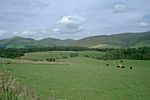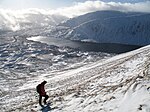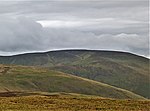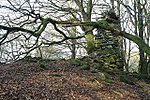Bodesbeck Law
Donald mountainsMountains and hills of Dumfries and GallowayMountains and hills of the Scottish BordersMountains and hills of the Southern Uplands

Bodesbeck Law is a hill in the Ettrick Hills range, part of the Southern Uplands of Scotland. It is the primary west-south-western terminus of the ridge that runs parallel to the A708 road along the Dumfries and Galloway-Scottish Borders border, occasionally titled the "Bodesbeck Ridge".
Excerpt from the Wikipedia article Bodesbeck Law (License: CC BY-SA 3.0, Authors, Images).Bodesbeck Law
Geographical coordinates (GPS) Address Nearby Places Show on map
Geographical coordinates (GPS)
| Latitude | Longitude |
|---|---|
| N 55.3805 ° | E -3.3116 ° |
Address
Dumfries and Galloway
Scotland, United Kingdom
Open on Google Maps











